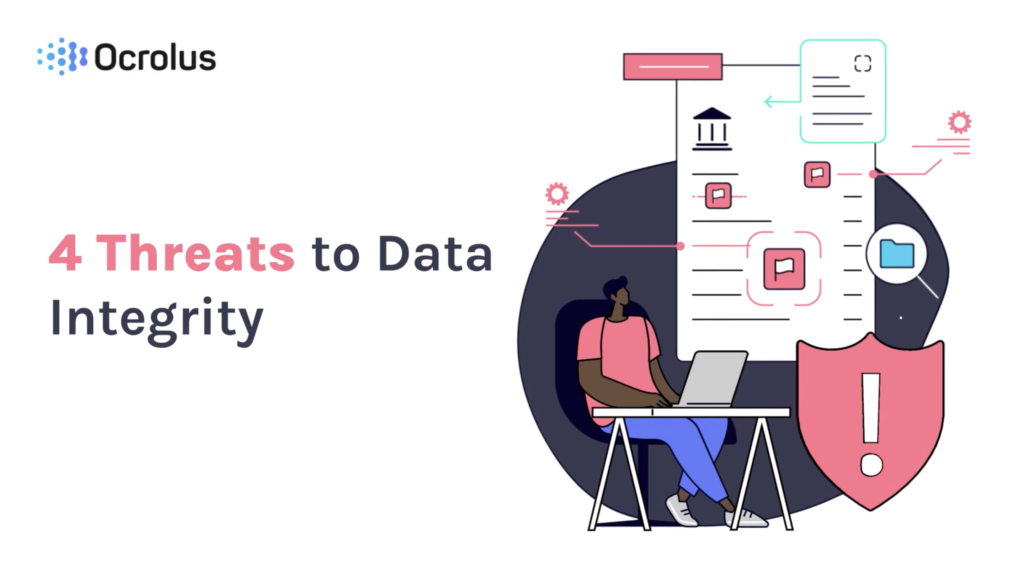4 Threats to Data Integrity and How to Overcome Them

As a lender, every loan you make is only as reliable as the data used to make the underwriting decision. If a borrower’s financial data is inaccurate, incomplete, or misrepresented, the loan may be more of a risk than you were comfortable taking on.
That’s why it’s crucial to ensure the integrity of your data. If you can’t trust your own data, your underwriting decisions may be flawed.
What Is Data Integrity?
Data integrity refers to the consistency and accuracy of data throughout its life span and across various formats. Lenders’ data may become corrupt when transferred from one format to another. For example, when an employee manually enters data from a borrower’s application into an online system, some of the figures may be misread or even deleted. In just one data transfer, some of the data may already become inaccurate. By ensuring data integrity, lenders can avoid such a scenario.
Another example is borrower submitted documents where the displayed data has been altered. The loan originator may transcribe the supplied data correctly, but the “true” data may have been overwritten.
What Are the Threats to Data Integrity?
To help create and maintain the integrity of their data, lenders should be aware of these common threats:
- Human error.
The manual process of translating or transferring data from one format to another can create room for human error. For example, a person might accidentally delete a row of data in a spreadsheet or misread the figures in a PDF scan.
- Inconsistencies across formats.
Data created or entered in one format often doesn’t appear correctly when transferred into another format. If a set of data was created in Microsoft Excel, it may not translate accurately to a different format that doesn’t include cell referencing.
- Collection errors.
Sometimes, data simply starts out with errors during the collection phase, such as providing an incomplete picture of the situation. For example, a potential borrower’s W2 may show her income from a specific employer, but may not reflect her full income if she also has additional W2 income or a side hustle that nets 1099 income.
- Privacy breach or cybersecurity breach.
Data security issues can also compromise data integrity. If someone hacks into your company’s database and steals or alters information, or if an employee maliciously alerts information in your system, your data is no longer reliable.
Why Is Data Integrity Important?
For lenders, data integrity is crucial because every underwriting decision is based on data such as the borrower’s income, debt level, and credit history. If any of the data used to make a lending decision is faulty, the lender may be incurring unforeseen risk.
For example, an auto lender makes lending decisions based on information about the vehicle, and the borrower’s income information and credit history. Say a car has 200,000 miles on it, but a data error shows only 20,000, or the borrower’s income is $25,000 but a data error shows an income of $250,000. Those inaccurate figures could result in a faulty risk assessment.
Decisions based on incomplete or inaccurate data during underwriting can negatively impact a lender’s business, putting it at risk of unnecessary defaults or loss of business. If the loss of data integrity is related to a security breach, lenders will be responsible for customer damages, which can be costly. In addition, lenders must deal with the public relations fallout: When customers or would-be customers feel that their data is unsafe, they are less likely to do business with a particular lender.
How to Maintain Data Integrity
Maintaining data integrity is an ongoing challenge for businesses of all types. Because data can become compromised at almost any stage, it’s important to vigilantly protect its integrity throughout its lifecycle. Consider these three proactive ways to protect and preserve the integrity of your data:
- Educate staff about the importance of data integrity.
Staff members at all levels need to understand the importance of accurate, reliable, and complete data. Whether they are entering data, transferring files to various formats, or retrieving data from various systems, all staffers should be educated about data integrity. Provide training sessions for staffers to help them understand how inaccurate data can lead to unreliable lending decisions and threaten the organization’s bottom line, and discuss the importance of data integrity on a regular basis. Reinforce the training with reminders such as on-site posters or quarterly email updates.
- Be vigilant against cyber threats.
Cybersecurity is crucial for businesses of all sizes. Make sure your company has a strong cybersecurity plan and works to actively enforce it. A cybersecurity plan should specify potential security risks and threats and outline the security policies, procedures, and controls to protect your organization against those risks. It should also include the specific incident response steps that should be taken in case of a cybersecurity incident.
- Implement AI solutions.
Artificial intelligence (AI) solutions can help lenders with underwriting decisions by extracting data efficiently and using machine learning and pattern recognition to contextualize and properly configure data in various formats. For example, Ocrolus intelligently selects the extraction tool that will result in the highest raw accuracy, then layers in proprietary pattern recognition and machine learning models. Data fields that cannot be automatically confirmed are then routed through a unique machine and human quality control workflow.
Learn more about how Ocrolus can help streamline your underwriting process through better data extraction and validation.





